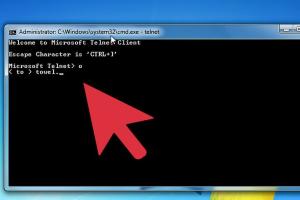Unlocking Telnet: The Ultimate Guide to Watching Movies Online

-
Quick Links:
- Introduction
- What is Telnet?
- Why Use Telnet for Watching Movies?
- Setting Up Telnet
- Finding Movie Servers
- Connecting to a Server
- Navigating Movie Libraries
- Common Telnet Commands
- Troubleshooting Common Issues
- Case Studies
- Expert Insights
- FAQs
Introduction
In the age of streaming, many assume that watching movies online requires fancy applications or subscription services. However, there's an old-school method that still holds value—Telnet. This article will guide you through the steps of using Telnet to watch movies, detailing everything from setup to execution.
What is Telnet?
Telnet is a network protocol that allows you to connect to remote systems over the Internet. It operates through a command-line interface, enabling users to execute commands on a remote server as if they were physically present. Although many consider it outdated, Telnet has unique applications, including accessing movie servers.
Why Use Telnet for Watching Movies?
- Low Bandwidth Usage: Telnet commands are lightweight and require minimal bandwidth compared to standard video streaming.
- No GUI Required: For users comfortable with command-line interfaces, Telnet offers a straightforward approach.
- Access to Unique Content: Some servers provide rare or unique movie content not available on mainstream platforms.
Setting Up Telnet
Before you can watch movies using Telnet, you need to set it up on your machine. Follow these steps:
- Windows: Open the Control Panel, navigate to Programs, click on Turn Windows features on or off, and check Telnet Client.
- Linux: Open the terminal and type
sudo apt install telnetfor Debian-based systems orsudo yum install telnetfor Red Hat-based systems. - macOS: Telnet is included in the terminal. Open Terminal and type
telnetto confirm it’s available.
Finding Movie Servers
To watch movies using Telnet, you need access to specific servers that host movie content. Searching online forums, tech blogs, or community resources can help you find reliable movie servers. Ensure the legality and safety of the sources you choose.
Connecting to a Server
Once you've identified a movie server, you can connect using the following command:
telnet [server_address] [port]Replace [server_address] with the IP address or domain name of the server, and [port] with the port number supplied by the server.
Navigating Movie Libraries
After connecting, you may need to navigate through menus or directories. Use the server's command interface to browse available movies. Familiarize yourself with the commands specific to the server you are using, as they can vary.
Common Telnet Commands
Here are some common commands you might encounter while using Telnet:
| Command | Description |
|---|---|
ls |
Lists the contents of the current directory. |
cd [directory] |
Changes the directory to the specified folder. |
get [file] |
Downloads the specified file to your local machine. |
Troubleshooting Common Issues
While using Telnet, you may encounter various issues. Here are some common problems and their solutions:
- Connection Timeouts: Check if the server is online and ensure you're using the correct address and port.
- Authentication Errors: Some servers require credentials. Make sure you have the correct username and password.
- Command Not Found: Refer to the server's documentation for the correct command syntax.
Case Studies
Several communities have successfully utilized Telnet for movie streaming. For instance, a group of tech enthusiasts created a Telnet movie server that streams classic films. Their success showcases the potential of using Telnet for unique content delivery.
Expert Insights
Experts suggest that while Telnet may not be as popular as modern streaming services, its command-line interface can offer a unique and fulfilling experience for tech-savvy users. Always ensure you are accessing legal content and stay aware of the risks involved in using Telnet for streaming.
FAQs
1. Can I watch movies on Telnet for free?
Yes, many servers offer free access to movies, but always verify the legality of the content.
2. Do I need special software to use Telnet?
No special software is required; most operating systems have Telnet built-in or available for installation.
3. Is it safe to use Telnet for watching movies?
While Telnet itself is not inherently unsafe, be cautious about the servers you connect to and the content you access.
4. What types of movies can I find using Telnet?
You can find a variety of movies, including classics, indie films, and hard-to-find titles.
5. Can I use Telnet on mobile devices?
Yes, there are Telnet clients available for mobile platforms, allowing you to connect and stream movies on the go.
6. What should I do if I can't connect to a server?
Double-check the server address and port number, and ensure the server is operational.
7. How do I exit Telnet?
You can exit Telnet by typing exit or logout in the command line.
8. Is Telnet better than other streaming services?
Telnet offers unique access to certain content, but mainstream services provide a more user-friendly experience and higher quality streams.
9. Can I use Telnet for other purposes?
Yes, Telnet can be used for various network tasks, including remote server management and accessing command-line interfaces.
10. How do I know if a Telnet server is safe?
Research the server and read reviews or feedback from other users to determine its safety and reliability.
Random Reads
- How to turn ipad on
- How to turn off airplay complete guide
- Turn off vpn iphone ipad
- Turning pull chain light fixture into switch
- How to uninstall minecraft
- How to uninstall opera
- How to make fences in minecraft
- How to use emulators and roms
- How to update apps on kindle fire
- How to update download java